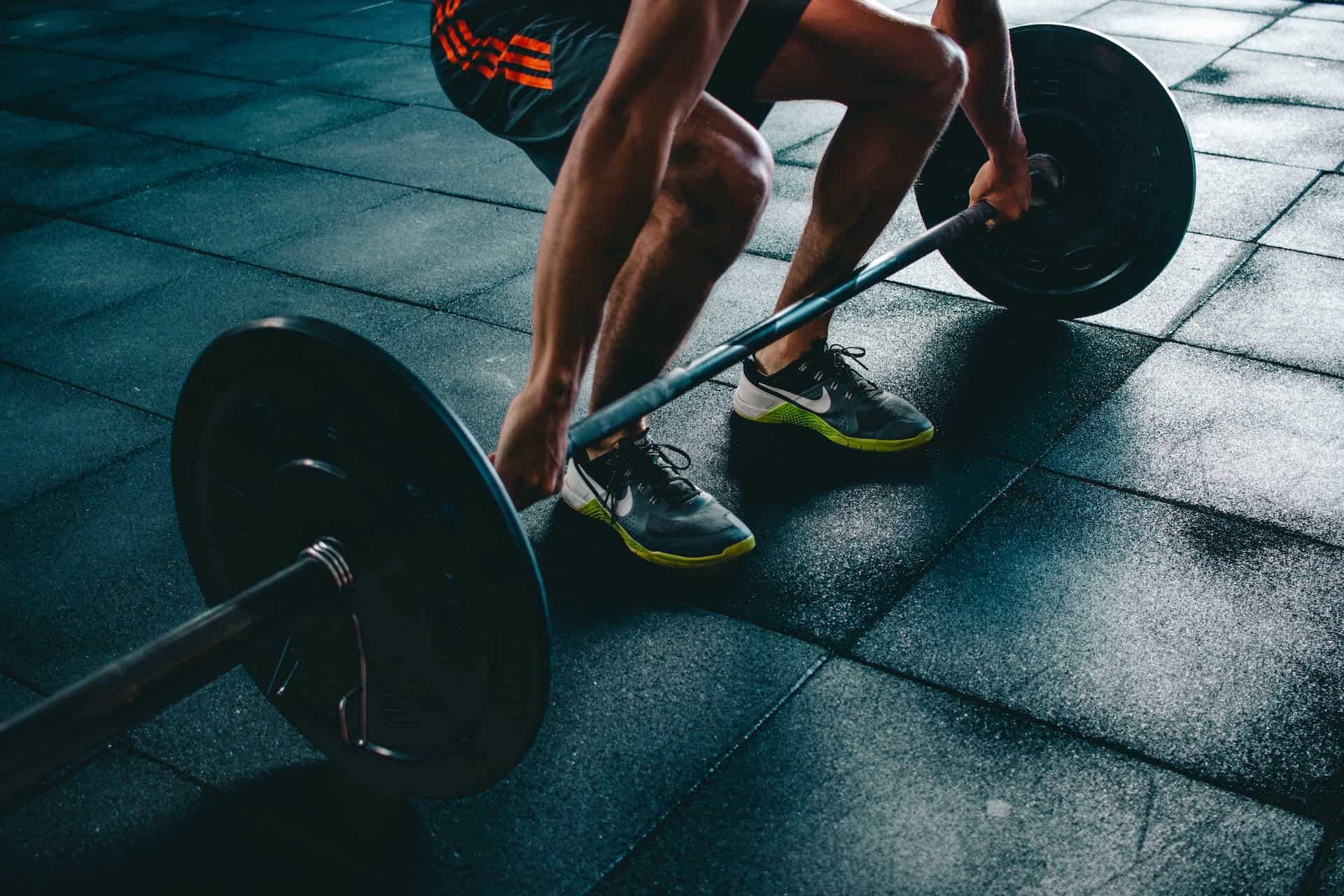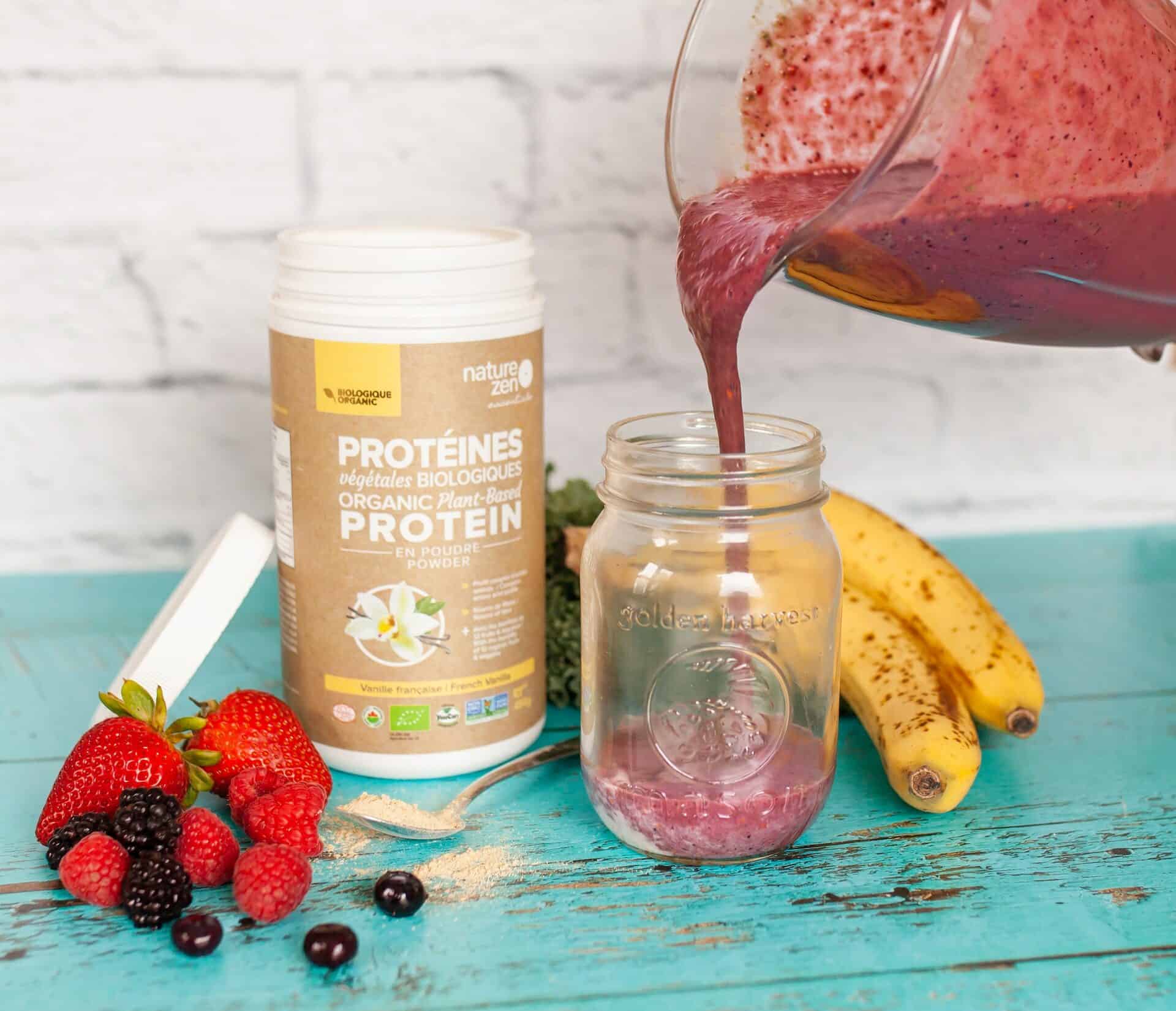Many people experience concerns about unexpected weight gain and low energy. If this sounds familiar, you might be thinking that a sluggish metabolism is a culprit. As a personal trainer, people often come to me with concerns about a slowing metabolism, but the truth is that metabolism is complicated and depends on many, usually unchangeable, factors.
That being said, there are some simple fitness and lifestyle interventions that you can add to your routine to increase your metabolism. These activities can also make you feel great and improve your well-being on many other levels.
TL;DR: metabolism cannot be reset, but it can be increased by adding the following to your wellness routine:
- Resistance training
- Protein
- Rest
Before we look at what you can do to increase your metabolism, let’s take a look at what metabolism means.
Topic Contents
What is Metabolism?

Metabolism is the process that bodies use to produce energy from food. Your body’s metabolism is constantly working to keep your body alive.
Your basal metabolic rate is the rate at which your body turns calories into energy for involuntary processes such as:
- Heartbeat
- Breathing
- Digesting food
- Thinking
Your resting metabolic rate accounts for energy used for bodily functions and light energy expenditure for daily activities such as moving and sitting.
These rates are guided by several factors, including:
- Genetics
- Age
- Activity level
- Organ size
- Muscle mass
Some of these factors, such as genetics and organ size, cannot be changed. The others can be addressed to a small degree by physical activity.
While metabolism cannot be ‘reset,’ you can do a few things to increase your resting metabolic rate.
Body Composition
Fitness interventions for increasing metabolism are related to body mass type, so let’s take a moment to distinguish the difference between lean body mass, muscle mass, and fat mass.
Your body is composed of two different types of mass:
- Lean body mass – Lean body mass is made up of muscle mass, but also the mass of water, bones, tendons, ligaments, organs, and some essential fat required for the function of your nervous system, bone marrow, and organs.
- Fat mass – Accounts for both the essential fat and the non-essential fat that is stored in the body. Non-essential fat mass can be subcutaneous fat, which collects near the skin, or visceral fat, which surrounds your organs.
Because most of the components of lean body mass are fixed, we can only focus on increasing muscle mass and decreasing non-essential fat mass in fitness.
FYI: About 3% of a man’s body mass is essential fat, and about 10-13% of a woman’s body mass is essential fat. According to the American College of Sports Medicine (ACSM), a ‘good’ percentage of body fat for a 30-39-year-old man is approximately 15-18%, and a ‘good’ percentage of body fat for a 30-39-year-old woman is approximately 17.5-21%. Women require more fat mass than men, mainly for reproductive function.
This One Thing can Help you Speed up your Metabolism

TL; DR: building muscle mass will help you increase your metabolism (check with your doctor before starting any new workout routine).
The best way to increase resting metabolic rate is to increase your muscle mass. Muscle mass requires more energy to maintain than fat mass, so increasing your body’s ratio of muscle mass to fat mass can, by default increase your resting metabolic rate.
For the most part, a slowing metabolism might be related to a decrease in muscle mass and an increase in fat mass due to aging, inactivity, diet, stress, or sleep deprivation. Two exceptions are rare conditions that slow metabolism: Cushing’s syndrome and hyperthyroidism. If you’re concerned about these conditions, it is best to seek professional medical consultation.
Muscle Mass and Weight Loss
It is important to note that many people look to ‘reset’ their metabolism as a tool for weight loss.
Gaining muscle mass may not:
- Decrease the numbers on the scale.
Gaining muscle mass probably will:
- Shift your body composition.
- Help you achieve improved health markers.
- Give you a leaner appearance.
Exercise to Increase Metabolism
TL; DR: adding resistance training will help you increase your metabolism (check with your doctor before starting any new workout routine).
The good news is that increasing muscle mass is pretty straightforward (in terms of theory, it does take quite a bit of physical effort). The best way to build muscle mass is to engage in resistance training (a.k.a. strength training or weight training), such as weight lifting or bodyweight exercises.
The benefits of strength training include:
- Increased muscle mass.
- Improved ability to transform fat into energy.
- Slowed age-related muscle loss, which can occur at 3-8% per decade after age 30.
- Better bone health.
- Improved quality of life.
In one study, it took half the resistance workouts than aerobic exercise workouts for participants to build the same amount of muscle mass. Research shows that regular resistance training can increase the resting metabolic rate by about 5%.
How Much Resistance Training do you Need to Build Muscle Mass?
TL; DR: About three strength training sessions per week can help you build muscle mass
There is evidence that adding resistance training three days a week over eight weeks will lead to results. Two different routines of resistance can be effective:
Resistance training option 1:
- Add three days of full-body strength training to your workout routine.
Resistance training option 2:
- Add three days of strength training, each focusing on a different group of muscles, e.g., leg day, arm day, and back and abs day (this is my and many trainers’ preferred method).
Make sure to factor rest days into your strength training routine, as this is when your muscles repair and grow.
What Counts as Resistance Training?

Resistance training increases the strength of your muscles by causing them to activate against an opposing force. There are many methods of resistance training that work. You can switch up techniques to keep things interesting, but try to make sure you’re hitting all of your major muscle groups and that you are being challenged. Your muscles grow when they are pushed to their limit, be it through high-weight, low-rep, or low-weight, high-rep workouts.
Here are a few options for your muscle-building resistance training sessions.
- Weight lifting – Using the weight of dumbbells or barbells to increase the resistance a movement places on your muscles. If you’re new to weight training or want to work with heavy weights, it’s best to seek an experienced trainer to avoid injury.
- Bodyweight exercises – Bodyweight exercises use the weight of the body to add resistance to an exercise. Common bodyweight exercises include push-ups, pull-ups, planks, and squats. Don’t be fooled into thinking you need fancy equipment to build muscle mass — you don’t!
- Suspension training – Suspension training uses ropes and pulleys to increase resistance.
- Kettlebell training – Kettlebells are like dumbbells but have a different center of gravity, which changes the way that they resist your muscles.
- Pilates reformer classes – Pilates reformers are constructed with springs and pulleys that can add increasing resistance to specific exercises.
- CrossFit – A fitness brand that prescribes resistance exercises with and without equipment.
Keep in mind that while it will take about two months to increase muscle mass, maintaining muscle mass requires regular resistance training. If you’re new to resistance training, meet with a trainer or for a live group class to ensure you perform the exercises properly and avoid pain or injury.
Will Resistance Training Make your Muscles Bulky?
I’ve seen many people shy away from weightlifting because they don’t want to look like a bodybuilder. The short answer is no; strength training will not make you look like a bodybuilder. Bodybuilders often go to extreme measures to achieve their bulk and definition. Will your body composition and appearance change once you incorporate more resistance training into your routine? Most likely, but I would almost guarantee you will enjoy how you feel and look.
Cardio and Muscle Mass
While aerobic exercise, or “cardio,” isn’t the best form of exercise for building muscle mass, it is important for other health markers. A blend of both resistance training and aerobic training is best for overall well-being, as aerobic exercise is important for heart and lung health.
A Workout Recipe for Increased Muscle Mass and Overall Well-being
Specific workout routines depend on the individual and your needs, limitations, and capabilities, but here is a general guideline for creating a weekly workout routine that will increase muscle mass, metabolism, and overall well-being. Of course, always check with a doctor before starting a new workout routine.
- Three 20-30 minute resistance training sessions (safely increase weight/resistance or reps over time)
- Three 30-60 minute cardio sessions (walking, running, cycling) each week
- At least one rest day
There are a lot of fancy workout programs out there, which can be fun if you’re into it, but an effective fitness program doesn’t need to be complicated!
Food that Increases Metabolism

TL;DR: eat more protein (but not too much)
If you’ve ever tried to change your body composition through exercise alone, you will understand that fitness does not exist in a vacuum. Shifting body composition and overall well-being requires a holistic approach, which focuses on healthy eating, mental health, and self-care practices.
The number one dietary consideration for building muscle mass is protein intake. Research shows that people who eat higher protein diets in combination with resistance training and anaerobic exercise increase their lean body mass and lose fat mass. On the flip side, diets lacking protein have been shown to contribute to overeating and weight gain.
Always check with a doctor before changing your eating routine.
High-quality Protein Sources that May Support Muscle Mass Growth
- Lean meats
- Fish
- Eggs
- High-quality protein powders
- Beans
- Nuts
- Cottage cheese and yogurt
Foods that Could Keep you From Making Gains
- Processed foods
- Refined grains
- Refined sugars
- Alcohol
Side note: Eating vegetables, fruits, and whole grains is vital for overall health, so don’t overlook these healthy foods while on your quest to gain muscle.
How Much Protein do I Need to Eat in a Day to Increase my Metabolism?
One 2022 systematic review found that eating up to 1.5 grams of protein per kilogram (about 2.2 lbs) of body weight each day, paired with strength training, can help build muscle mass.
That means that per this study, a 150lb person can eat up to about 102 grams of protein per day to support muscle growth.
| Weight in kg (approx.) | Weight in lbs | Approximate daily grams of protein intake per this study |
| 45.4 | 100 | 68 |
| 56.7 | 125 | 85 |
| 68.0 | 150 | 102 |
| 90.7 | 200 | 136 |
| 68.0 | 150 | 102 |
Keep in mind that eating too much protein does not lead to additional muscle-growing benefits and can cause health concerns and that eating too few calories overall can inhibit muscle mass growth, so it is best to eat protein as part of a holistically healthy diet.
Rest, Sleep, and Metabolism
TL; DR: You need to get quality rest for your muscles to grow and your metabolism to run properly
Taking a break while working to build muscle might seem counterintuitive, but this is when the magic happens. The reason weightlifters often focus on different muscle groups each day is to give the other muscles time to rest and grow. Lifting weights creates tiny rips in muscles, which then need to be repaired through rest and proper nutrition. When muscles repair, they grow stronger!
Rest, Stress, and Hunger
Rest also helps counteract stress and improve sleep quality. When you experience stress, the hormone cortisol courses through your body. An abundance of this hormone can increase appetite, especially for comfort foods, which may lead to fat mass gain (which would likely slow your resting metabolic rate).
Sleep and Weight Gain
The ultimate mode of rest, sleep, is crucial for muscle health and maintaining a healthy weight (and literally every other body function) maintaining a healthy weight and hormone balance.
People who don’t get enough sleep:
- Tend to gain weight and fat mass.
- May crave more high-calorie comfort foods.
- Might experience an imbalance in their “hunger hormones,” leptin and ghrelin, which guide appetite and fat storage.
Eating more low-quality foods can lead to an increase in fat mass and a slowing of your metabolic rate. What’s more is that people who are tired often skip out on their workouts, and people who skip out on exercise may experience more trouble sleeping, which can start a vicious cycle that does nothing to support your muscle gains, metabolic rate, or overall well-being.
How Much Sleep do you Need to Build Muscle Mass?
7-9 hours of sleep per night is the general guideline for proper restoration.
Increasing muscle mass through exercise, thoughtful eating, and self-care can help increase resting metabolic rate, even if slightly. However, the benefits of these actions often extend much further and can also improve body composition, bone health, and subjective well-being and decrease the risk of developing chronic conditions down the road.
There’s no better time than right now (check with your doctor first) to add resistance training, protein, and quality rest to your weekly routine.
Jacqui Somen is a NASM certified personal trainer and writer. She is passionate about fitness, sustainability, and the outdoors and loves helping people feel their best.







